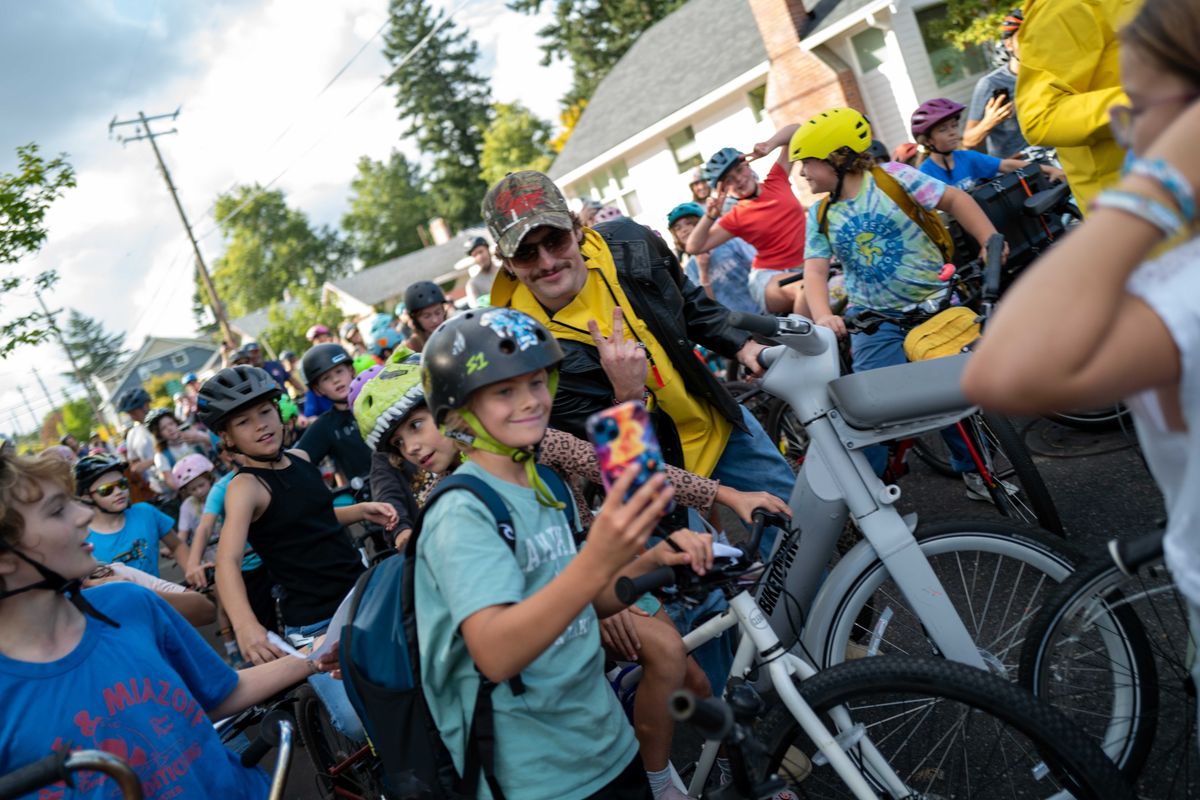Singer Benson Boone surprised hundreds of elementary school kids by joining their 'bike bus'
"This is what you get when you combine good music, movement & community!!"
Benson Boone surprised students in Portland with Bike Bus World.
Biking home from school got a lot better for a group of students in Portland, Oregon, thanks to pop singer Benson Boone. Boone joined a fully-packed bike bus on October 3, 2025, during a tour stop in the city after he was asked by Sam Balto, co-founder of Bike Bus World.
Before his show, Boone showed up for the kids and the Portland community with the biking collaboration made possible thanks to social media.
"Two weeks before the ride we posted a video inviting Benson to join our Bike Bus," Balto tells Upworthy. "Thanks to thousands of people tagging him and sharing the video a week later his manager reached out to get more details. Four hours before the school day ended I got a call saying they wanted to ride, so we surprised the kids after school with an amazing Bike Bus ride home."
Boone hopped on a bike and rode home with students, who blasted his music from a speaker as they rode. They went absolutely wild and sang along to some of his biggest hits. Families and more kids lined the streets along the route to say hello and join in on the fun.
"Benson Boone is the kindest, most genuine individual I have ever met. He was chatting with the kids, asking their name, answering questions, taking selfies and singing along with them," says Balto. "At the end of the ride he stayed and signed hundreds of autographs for the kids. He really gave our children and community such an amazing gift."

Boone's willingness to join the ride and sacrifice his time and energy meant the world to students and parents, and people around the world shared their praises in the comment section.
"Did anyone else get emotional? Especially when their little voices started to sing!!" one wrote. Another added, "Core memories in the making 🥹." One viewer shared, "I love this for all of you!! So awesome that he could join in on the awesomeness of your bike bus!!" And another added, "I'd say Benson's heart grew even more than it already has.....Oohhh boy now I'm crying because those beautiful voices 💛💛💛💛💛💛💛"
Balto, also a physical education teacher, started Bike Bus World in 2020 to encourage kids to get active by biking to and from school together. The organization provides "organizers with the tools and guidance to create bike buses, helping them advocate for active transportation infrastructure and policy, as well as securing funding both locally and nationally."
The movement has gained massive momentum, and back in January 2025, singer Justin Timberlake also joined Balto and students on a bike bus ride.
As one of the parents who rode commented on a video: 'This was so fun! It took a lot to unseat K-pop demon hunters in our house but you did it Benson Boone? Thanks for riding home from school with our kiddos last week!! If your play counts go up in the 97211, this is why!!'"
